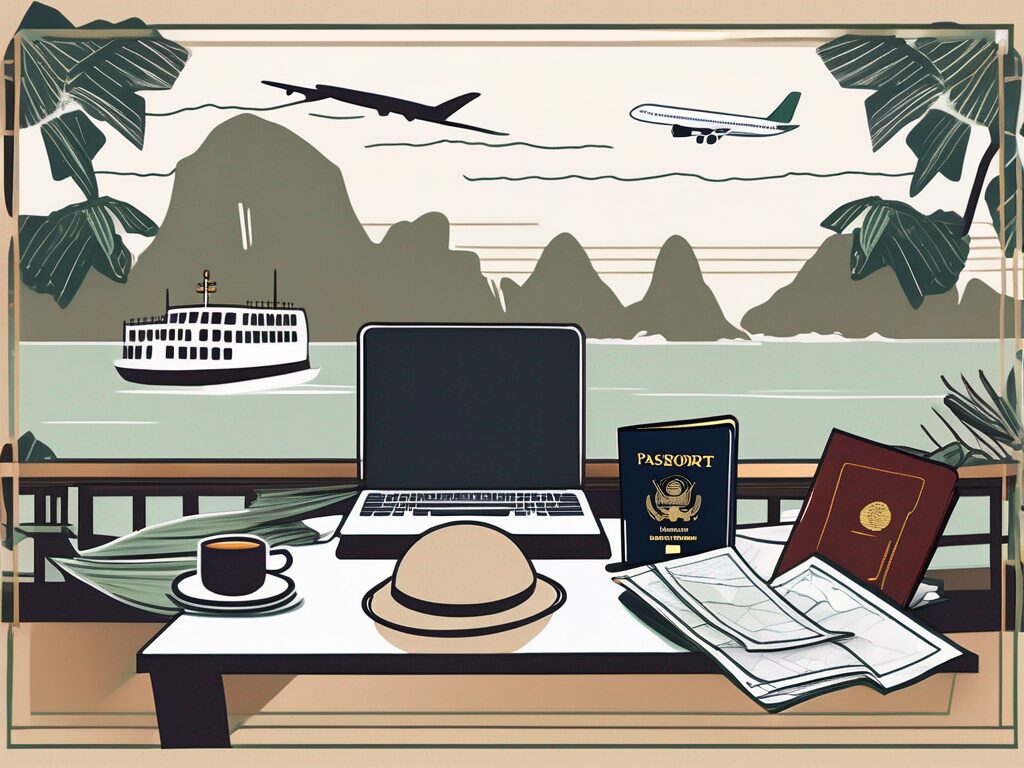Venturing into the world of teaching English as a foreign language (TEFL) can be a thrilling journey. And if you’re considering Vietnam as your destination, you’re in for a treat! This Southeast Asian gem, with its bustling cities, stunning landscapes, and rich culture, is a hotbed for TEFL opportunities. But before you pack your bags and hop on a plane, there’s a crucial aspect you need to consider: the visa requirements for teaching in Vietnam.
Obtaining a visa might seem like a daunting task, but with the right guidance and preparation, it can be a smooth process. In this guide, we’ll walk you through the four essential steps to secure your visa for teaching in Vietnam. So, let’s dive in!
Step 1: Understand the Types of Visas
Just like a menu at a Vietnamese restaurant, there’s a variety of visas to choose from. The type of visa you’ll need depends on your circumstances and intentions. For teaching, you’ll typically need a business visa (DN) or a work visa (LD).
The DN visa is suitable for those who have secured a job offer but haven’t started working yet. On the other hand, the LD visa is for those who have already started their employment in Vietnam. It’s a bit like choosing between a starter and a main course, depending on how hungry you are!
Business Visa (DN)
The business visa is valid for up to one year and allows multiple entries. It’s the perfect choice if you’re still in the process of securing a work permit. Think of it as your ‘foot in the door’ to start your teaching journey in Vietnam.
However, keep in mind that while this visa allows you to enter Vietnam and look for jobs, it doesn’t permit you to work. It’s like having a ticket to a football match, but you’re not allowed to play on the pitch.
Work Visa (LD)
The work visa, on the other hand, is the ‘real deal’. It allows you to legally work in Vietnam and is valid for up to two years. However, to obtain this visa, you’ll need to have a work permit in place. It’s like being a fully-fledged player in the football match, ready to score some goals!
So, before you decide on the type of visa, make sure you understand your circumstances and requirements. It’s like choosing the right tool for the job!
Step 2: Gather Your Documents
Now that you’ve decided on the type of visa, it’s time to gather your documents. This step is akin to assembling your ingredients before you start cooking. Here’s what you’ll need:
For the Business Visa (DN)
You’ll need a passport with at least six months’ validity, a completed visa application form, and a letter from your future employer in Vietnam. It’s a bit like gathering your ID, CV, and job offer letter when applying for a job.
Remember, each document plays a crucial role in your visa application. So, ensure they’re all in order and up-to-date. It’s like making sure all your ingredients are fresh before you start cooking!
For the Work Visa (LD)
For the work visa, you’ll need a passport with at least six months’ validity, a completed visa application form, a work permit, and a letter from your employer in Vietnam. It’s like the recipe for a more complex dish, requiring a few extra ingredients!
Again, make sure all your documents are in order. It’s better to be over-prepared than under-prepared, just like in a cooking competition!
Step 3: Apply for Your Visa
With your documents ready, it’s time to apply for your visa. You can do this at a Vietnamese embassy or consulate in your home country, or online for a visa on arrival. It’s like deciding whether to dine in at a restaurant or order a takeaway!
Applying at an embassy or consulate can take up to a week, while the online process is usually quicker. However, the online option is only available for those arriving by air. It’s a bit like choosing between standard and express delivery, depending on your needs.
When applying, make sure to follow all the instructions carefully. It’s like following a recipe to the letter to ensure your dish turns out perfect!
Step 4: Pay the Visa Fee
The final step is to pay the visa fee. The cost varies depending on the type of visa and the processing time. It’s a bit like paying for your meal at a restaurant, with the price depending on what you ordered and any extras you opted for.
Once you’ve paid the fee, all you need to do is wait for your visa to be processed. It’s like waiting for your meal to be cooked and served. And just like that, you’re ready to embark on your teaching journey in Vietnam!
Remember, the visa process can seem complicated, but with the right preparation and understanding, it can be a breeze. It’s like learning to cook a new dish. It might seem difficult at first, but once you’ve got the hang of it, it’s a piece of cake!
So, are you ready to unlock the door to your teaching adventure in Vietnam? With these four essential steps, you’re well on your way to making your dream a reality. Happy travels, and happy teaching!
Elevate Your Teaching Career with IPGCE
Ready to take your teaching aspirations to the next level in Vietnam or beyond? IPGCE is here to bridge the gap between your current qualifications and the demands of international schools. Our International Postgraduate Certificate in Education is tailored for educators seeking to enhance their credentials, connect with a global professional community, and gain a deep understanding of international curricula. With a proven track record of increasing interview callbacks, promotion rates, and salary, the iPGCE is your key to unlocking a world of opportunities. Don’t let inadequate qualifications hold you back. Join the UK’s #1 Teacher Training Course today and transform your teaching career with the flexibility that fits your busy schedule.

